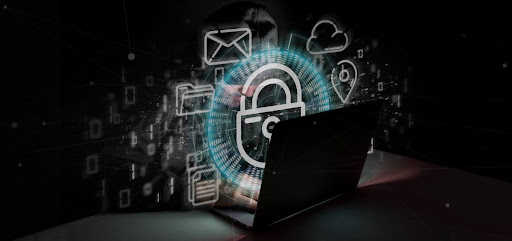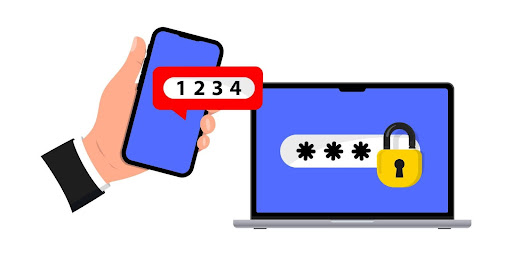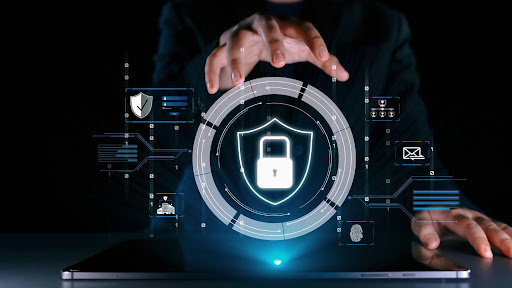
by Gaurav Karale | Jun 25, 2025 | Ivanti Security
As we reach the middle of 2025, the global cybersecurity landscape has become more complex than ever. With hybrid work environments, expanding digital footprints, and relentless cyber threats, businesses, especially mid to large enterprises—are constantly looking for more efficient and integrated solutions. Yet, in this pursuit, one name remains surprisingly under the radar despite its robust capabilities: Ivanti Security.
While most organizations scramble to invest in trending security platforms or standalone tools, Ivanti Security is a single solution built for today’s evolving threat environment. From patch management to risk-based vulnerability analysis and endpoint protection, Ivanti provides an end-to-end solution to securing distributed environments—but it’s also one of the most underappreciated tools in the enterprise cybersecurity ecosystem.
Unifying IT and Security Operations
One of the main reasons Ivanti Security is a gem in disguise is its capacity to close the age-old gap between IT and security teams. Historically, IT operations and cybersecurity were in silos, but this usually resulted in delayed response times, issues with patching, or dispersed visibility across endpoints.
Ivanti breaks this pattern by offering an integrated platform that allows both IT and security teams to work in sync. This collaboration ensures faster detection, remediation, and risk mitigation—something that’s becoming crucial as organizations deal with zero-day vulnerabilities and sophisticated malware attacks.
Patch Intelligence Meets Automation
Manual patching continues to be one of the biggest pain points for IT teams. Missed patches or delayed updates are often exploited by attackers. Ivanti’s Patch Intelligence and automation features allow enterprises to scan their entire environment, prioritize critical vulnerabilities based on real-world threat data, and automate patch deployment—all without disrupting end users.
In 2025, when cybercriminals are capitalizing on extremely targeted attacks within a matter of hours of a vulnerability being made public, this type of proactive patch management is no luxury; it’s a requirement.
Contextual Risk-Based Vulnerability Management
Traditional vulnerability scans generate long lists of potential threats but fail to prioritize them. This often leads to “alert fatigue” and misaligned efforts. Ivanti solves this problem with its risk-based approach. Instead of overwhelming security teams, it offers contextual intelligence, highlighting which vulnerabilities pose real, exploitable risks to the business.
This accuracy enables companies to make data-driven decisions, concentrating on areas where it truly counts. That is the type of operational transparency that renders Ivanti Security invaluable in a year such as 2025, where every moment of holdup could be the difference between dollars and damage to reputation.
Zero Trust and Beyond
The Zero Trust model is no longer an emerging trend, it’s a required security framework in 2025. Ivanti’s platform fully supports Zero Trust principles by managing user identities, enforcing device compliance, and limiting access based on roles and contextual data.
Beyond Zero Trust, Ivanti also enhances resilience through endpoint privilege management. Rather than granting full administrative access, it enforces least privilege principles, dramatically reducing the attack surface without compromising user productivity.
Securing Everywhere Work
With remote and hybrid work now the standard, the need for secure access from any device, anywhere, has skyrocketed. Ivanti’s strength lies in its capability to protect the “everywhere workplace.” Whether it’s a BYOD device connecting from a café or a corporate laptop in a branch office, Ivanti ensures that security policies, patching, and access controls are consistently enforced across the board.
It’s this adaptability that makes it so powerful—and so often overlooked. Many businesses still invest in tools that are either too complex to deploy remotely or lack the granularity needed for secure work-from-anywhere models.
Smooth Integration and Scalability
Many cybersecurity tools promise features but fail when it comes to scalability and integration with existing systems. Ivanti, on the other hand, offers seamless compatibility with numerous IT infrastructure setups. Whether you’re managing hundreds or thousands of endpoints, the platform is built to scale effortlessly.
It also integrates with popular SIEM, CMDB, and endpoint detection tools, ensuring that organizations can expand their cybersecurity architecture without starting from scratch.
Why Ivanti Deserves More Attention in 2025
Within a crowded cybersecurity market filled with niche tools, Ivanti offers a single-vendor solution that can provide operational efficiency, proactive threat response, and cost savings over the long haul. However, it doesn’t get the attention it merits, far too often trumped by more flashy-marketed competitors.
Businesses that take a deeper look at what Ivanti brings to the table are discovering that they can consolidate their security stack, reduce alert noise, and streamline compliance, all through a single platform.
Conclusion
As threat actors become more agile and regulatory frameworks become more stringent, organizations must rethink their cybersecurity strategies. Instead of chasing every new tool on the market, the real opportunity lies in leveraging powerful, consolidated platforms like Ivanti Security.
Acceron, a leading value-added distributor across the APAC region, is empowering enterprises to make smarter security choices with its comprehensive portfolio of IT and cybersecurity solutions. As a trusted partner for Ivanti Security and similar enterprise-grade tools, Acceron helps businesses enhance operational visibility, fortify their digital infrastructure, and stay resilient in 2025 and beyond.

by Gaurav Karale | Jun 25, 2025 | Multi Factor Authentication
As we move further into 2025, discussions regarding cybersecurity have progressed far beyond firewalls and antivirus programs. At the center of this evolution is one of the most vital elements of digital protection, Multi-Factor Authentication (MFA). Although MFA is already a conventional practice for businesses and SMBs, the development of this layer of security is now poised to revamp identity protection.
Let’s take a look at what’s next for MFA in 2025 and how upcoming trends are revolutionizing the future of identity security.
Passwordless Authentication Leads the Way
Passwords are increasingly becoming a weak point in cybersecurity. Despite a strong password policy, user error and phishing attacks compromise conventional login systems. Passwordless authentication is becoming mainstream in 2025. Biometric logins (fingerprint, facial recognition), hardware security keys, and magic link-based logins are driving this trend.
This trend is not merely about convenience; it’s a leap to more identity assurance. Companies seeking the best multifactor authentication solutions are choosing products that enable passwordless authentication, lessening reliance on user memory and decreasing credential-based attacks.
Context-Aware Authentication Becoming the Norm
Another increasing trend in 2025 is adaptive or context-aware MFA. Instead of the same degree of authentication each time, context-aware MFA examines user behavior, device, location, log-in time, and other data to figure out the degree of security required. For example, logging in via a known office machine might not need the same degree of validation as entering a dashboard via an unfamiliar network at 2 AM.
This dynamic reaction enhances both usability and security, which makes it one of the most important focuses in the best multifactor authentication solutions today.
MFA for Machine Identities and APIs
Historically, MFA was intended for human users. However, with the increasing number of IoT devices, cloud-native applications, and distributed microservices, machine identities like APIs, bots, and devices also need to be securely authenticated. Enterprises are implementing MFA protocols at the API level so that machines, just like users, are authenticated to be who they are.
Against this backdrop, solution vendors are broadening their offerings to provide secure access management for human and machine identities, enable easy API authentication, and enhance overall infrastructure resilience.
Integration with Unified Endpoint and Access Management
By 2025, MFA is no longer working in a silo. It is becoming more and more part of Unified Endpoint Management (UEM) and Identity and Access Management (IAM) tools. This makes sure that authentication processes are not only secure but also manageable through a centralized platform.
For example, Acceron’s portfolio boasts Nexus Authentication, a strong product that offers certificate-based logins, smart cards, and biometric functionality. It also seamlessly integrates with access control systems to produce a unified security environment. These integrations do more than simply layer identity security, however; they make it streamlined and efficient as well.
MFA-as-a-Service: Scalability for SMBs
MFA was previously regarded as an enterprise feature only because of cost and complexity. However, in 2025, MFA-as-a-Service (MFAaaS) is empowering small and medium-sized businesses to scale authentication without making significant infrastructure investments. Cloud-based MFA platforms provide simple setup, API integration, and friendly user interfaces, which enable businesses of all sizes to leverage it.
Most SMBs today seek the best multifactor authentication solutions that offer cloud-native agility, role-based privileges, and compliance-ready controls—all within a predictable, month-to-month cost structure.
AI-Driven Authentication Analytics
Artificial Intelligence is significantly contributing to the development of MFA. AI-powered MFA systems, through the analysis of login activity, anomaly patterns, and device profiles, have the ability to detect threats in real-time and adapt security needs dynamically. It not only minimizes friction for authorized users but also enhances protection against identity fraud.
AI-enabled analytics also enables CISOs and IT to recognize where there are areas of authentication failure and how they can further streamline their identity strategies.
User Experience Still Matters
While security is always the number one priority, user experience (UX) continues to be at the center of MFA development. Difficulty and intrusive authentication can result in user aggravation, poor compliance, or dangerous workarounds. In 2025, there’s a big trend toward frictionless security, authentication that is robust but almost invisible.
This encompasses biometric identification, QR code sign-ins, and authentication through wearable devices, all intended to safeguard users without inconveniencing them.
Conclusion
The future of MFA in 2025 is evident: it’s smarter, more adaptive, and more consolidated than ever. From passwordless authentication and context-aware policy to machine identity management and AI-powered analytics, the identity security future is dynamic and multi-dimensional.
Organizations, particularly those in industries such as finance, healthcare, or infrastructure, cannot afford to be in the slow lane of using antiquated practices. Rather, they need to adopt a contemporary MFA strategy that meets both compliance and operational requirements.
Acceron, one of the top value-added distributors in the APAC region, is pioneering this shift. Through its strong portfolio consisting of Nexus Authentication and other cutting-edge offerings designed specifically for identity and access security, Accerton supports organizations in choosing the best multifactor authentication solutions with effortless integration and technical expertise. Through innovation, security, and scalability, Accerton continues to support enterprises in their pursuit of enhanced digital resilience.

by Gaurav Karale | Jun 25, 2025 | Cyber Security
For small and medium-sized companies (SMBs), cybersecurity can seem like a scary field for huge corporations with full-time IT staff. But as threats are changing and cyber threats escalate in 2025, SMBs can no longer afford not to have solid security. The best news? There’s a growing list of powerful yet lesser-known cybersecurity tools that offer top-tier protection, especially when paired with the right digital security services.
The following are 15 under-the-radar cybersecurity tools that provide great protection for small-scale, growing businesses.
1. PRTG Network Monitor
A real-time view is essential to dealing with threats professionally. The tool provides thorough monitoring of networks, servers, and devices that can help detect and prevent anomalies before they become overwhelming. Used by big enterprises, PRTG is made available through the product line of Acceron, providing enterprise-level monitoring to SMBs through expert assistance and support.
2. OSSEC (Open Source Security)
This host-based intrusion detection system offers log monitoring, file integrity monitoring, and rootkit detection. It’s a versatile solution perfect for security teams with scripting knowledge.
3. Bitwarden
An affordable but capable password manager that securely shares across teams. It has two-factor authentication and is simple to deploy.
4. CrowdSec
Community-driven security-based tool, which monitors behavior and blocks malicious IPs in real time. It fortifies defenses by using global intelligence.
5. Snort
An open-source intrusion prevention system conducts packet logging and real-time traffic examination in order to identify suspicious behavior.
6. Gophish
Perfect for cybersecurity awareness training, Gophish mimics phishing campaigns and monitors employee reaction, essential for constructing human firewalls in SMBs.
7. VeraCrypt
Provides robust data encryption for files and disk drives. An absolute necessity for companies storing sensitive customer information or IP on hardware devices.
8. MailScanner
A powerful open-source email security solution that scans for malware, spam, and phishing attacks, securing one of the most popular avenues of attack.
9. Security Onion
A Linux distribution built for intrusion detection, network security monitoring, and log management. It combines multiple tools into a single, high-powered system.
10. Heimdal Thor Vigilance
A lightweight antivirus solution that gives active defense against ransomware and zero-day attacks. Perfect for SMBs with limited endpoint budgets.
11. DNSFilter
Blocks malicious domains at the DNS level, preventing phishing and malware downloads from even reaching the user.
12. Endpoint Security
Bolting patch management, device control, and threat detection, Ivanti provides layered protection for endpoints. Acceron distributes Ivanti, making it accessible to SMBs searching for a scalable and well-integrated endpoint defense and IT asset protection solution.
13. Cylance Smart Antivirus
Uses artificial intelligence to forecast and mitigate malware. With low system overhead and no dependence on the internet, it’s ideal for remote or mobile teams.
14. Nexus Authentication
Securing user identities is among the top issues of the day. Nexus offers multi-factor authentication, access control, and digital certificate management. Accessible through Acceron, Nexus makes identity security across systems and cloud applications a breeze.
15. Tridium Niagara Framework
Though generally recognized for building management, the Niagara Framework also assists in cybersecurity through system-wide threat awareness and control. Acceron facilitates this through Tridium, allowing organizations to integrate device-level security with IT-wide policies.
Why SMBs Need These Tools in 2025
Cyberattacks are not exclusive to multinationals anymore; ransomware, phishing, and data breaches now target businesses of every size. In 2025, the attackers are quicker, better organized, and armed with AI-driven techniques. For SMBs, investing in well-matched digital security services can make the difference between smooth operations and devastating breaches.
These less-well-known tools are cost-effective, yet agile and strong enough to secure varied environments. When coupled with strategic deployment and centralized management, they become the foundation of a solid security infrastructure.
The Value-Added Partner Role
Not only selecting the correct tools, but also integrating and managing them effectively is one challenge faced by SMBs. This is where having a value-added distributor like Acceron benefits.
With operations spread across the APAC region, Acceron offers:
- Curated, enterprise-class tools within SMB budgets
- Pre- and post-sales support to make deployment a breeze
- Technical consultation to make each tool compatible with your infrastructure
- Product training and lifecycle support
From PRTG for monitoring, to Ivanti for endpoint security, Nexus for authentication, and Tridium for unified management, Acceron assists SMBs in creating end-to-end cybersecurity solutions that are future-proofed.
Getting Started
If you’re an SMB looking to improve cybersecurity in 2025, here’s how to begin
- Identify vulnerabilities in your existing infrastructure
- Set priorities as per risks, be it email, network, or endpoint security
- Select modular tools that are easy to scale
- Train your employees, as awareness is half the battle
- Get experts on board who know how to make the tools work together
Final Thoughts
SMBs don’t have to settle anymore when it comes to cybersecurity. With the optimal blend of tools, most of which are underappreciated and affordable, small businesses can have enterprise-grade defense. When supported by robust digital security services, they help businesses stay ahead of evolving cyber threats.
With its product sophistication and robust product ecosystem, Acceron enables SMBs to conquer the cybersecurity market confidently in 2025. From detection and verification to endpoint protection, Acceron is the quiet backbone upon which many small organizations depend to remain secure, compliant, and resilient.

by Gaurav Karale | Jun 25, 2025 | Asset Management
Organizing your business assets effectively is no longer an extravagance; it’s a necessity, particularly for small businesses. With increasingly expanding organizations and the greater use of technology, the monitoring of hardware, software, and electronic assets is essential in keeping operations running and secure. Whether you’re in a startup or an expanding organization, the initiation of a simple but effective IT asset management process can be the turning point in your operations.
What Is IT Asset Management (ITAM)?
IT asset management is the process of monitoring, controlling, and maximizing all IT assets throughout their life cycle—acquisition, through use, to disposal. These IT assets range from hardware devices (such as laptops, printers, and routers) to software licenses, cloud subscriptions, and virtual machines. ITAM helps ensure your business derives maximum value from each asset with minimum compliance, downtime, or redundancy risks.
Why Small Businesses Need IT Asset Management
Small businesses usually have small budgets and thin teams. In the absence of a good ITAM system, it’s simple to misplace equipment, overlook software renewals, or lose compliance. A systematic way of managing IT assets ensures that you:
- Optimize asset utilization
- Prevent duplicate purchases
- Ensure licensing compliance
- Plan for future IT investments
Step-by-Step Workflow Blueprint for Beginners
Here’s a workflow blueprint beginners can follow for efficient IT asset management for their small businesses:
1. Identify and Categorize Assets
Start by enumerating all the IT assets in your organization. Organize them under categories such as:
- Hardware: Desktop computers, laptops, servers, routers
- Software: Operating systems, productivity software, antivirus applications
- Cloud services: SaaS licenses, storage facilities
- Mobile devices: Smartphones, tablets
Employ asset tags and serial numbers to provide each item with a unique identifier. This task lays the building block for your ITAM system.
2. Implement an IT Asset Management Tool
Manual tracking via spreadsheets might work initially, but it quickly becomes outdated and error-prone. Investing in an IT asset management solution helps automate tracking, streamline updates, and centralize data. Look for tools that support real-time inventory updates, integrations with procurement systems, and license tracking.
3. Assign Ownership and Responsibility
Every asset should have an assigned owner—either a department or an individual. This adds accountability and simplifies issue resolution. Ownership records should include:
This step is critical for security, particularly when using mobile devices or remote workers.
4. Track Asset Lifecycle
Track all assets from purchase to disposal. Establish lifecycle phases such as:
Lifecycle tracking enables budget forecasting and ensures timely replacement or upgrade.
5. Schedule Regular Audits
Implement regular audits, every quarter or biannually, to confirm asset location, condition, and usage. Utilize audit results to address discrepancies, decommission out-of-date devices, or repurpose underused assets.
6. Maintain Software License Compliance
Inadequate software license management can result in costly fines and legal consequences. Monitor:
- License type (per-user, device-based)
An ITAM tool can alert you ahead of time when licenses are up for renewal or whether you’re under- or over-utilizing them.
7. Incorporate Security Policy
Asset management is also important for cybersecurity. Maintain security tools and associate ITAM with endpoint protection platforms to easily detect vulnerabilities. Encrypt sensitive information and monitor devices that store or access business data.
8. Plan for Maintenance and Support
Servers and infrastructure assets need regular maintenance. Schedule updates, hardware inspections, and performance reviews. This maximizes asset longevity and avoids surprise failure.
9. End-of-Life and Disposal Management
When an asset comes to the end of its useful life, utilize the following proper disposal procedures:
- Deactivate from the active inventory
- Recycle or dispose of hardware in a responsible manner
- Document for proof of compliance
An end-of-life checklist guarantees your company complies with the environment and data protection regulations.
10. Analyze and Optimize
Lastly, utilize reports exported from your ITAM tool to:
- Gain insight into asset utilization trends
- Eliminate unnecessary expense
- Streamline procurement decisions
Through examination of this information, you can regularly enhance the ROI and efficiency of your IT asset spending.
Common Errors to Avoid
- Failing to keep records current after modifications
- Dependent exclusively on manual tracking
- Forgetting mobile or remote assets
- Forgetting software compliance
- Postponing audits and upkeep
Avoiding these errors maintains a streamlined, compliant, and responsive IT infrastructure.
Conclusion
Good IT asset management is not exclusive to big corporations. For small companies, it’s a strategic benefit that promotes smoother operations, optimized budgets, and lower risks. With proper tools and a novice-friendly process, even startups can have complete mastery of their IT assets.
Acceron, a reputable value-added distributor in the IT security and infrastructure market, equips businesses throughout the APAC region with sophisticated asset management and monitoring technologies. Its technical depth and strategic product partnerships simplify small businesses’ ability to deploy and expand ITAM for sustained success.

by Gaurav Karale | Jun 20, 2025 | Niagara Framework
The future of building automation is being reshaped by intelligent, open, and interoperable platforms, and one name leading this evolution is the Niagara Framework. Originally developed by Tridium, the Niagara Framework has become a cornerstone in the world of smart building technologies. But for many facility managers, system integrators, and property owners, the inner workings of Niagara can seem complex. This article aims to demystify the Niagara Framework and explain what it means for the future of your building.
What is the Niagara Framework?
At its core, the Niagara Framework is a software platform that integrates diverse building systems into a unified interface. It acts as middleware that connects, normalizes, and controls data from HVAC, lighting, energy, security, and other building subsystems, regardless of protocol or manufacturer. By using a standardized and open architecture, the Niagara building management system enables facility stakeholders to streamline operations, enhance energy efficiency, and gain real-time visibility across multiple assets.
Protocol Agnostic Integration
One of Niagara’s strongest features is its ability to bridge the gap between disparate devices and protocols. Whether your building uses BACnet, Modbus, LonWorks, KNX, or legacy proprietary systems, Niagara can bring them together on a single, web-based platform. This eliminates the need for multiple dashboards and simplifies the management of complex systems.
The protocol-agnostic approach not only reduces integration headaches but also future-proofs your infrastructure. As newer technologies and IoT-enabled devices become more common, your building remains adaptable without the need for complete system overhauls.
Real-Time Monitoring and Control
The Niagara building management system allows real-time monitoring, data logging, and control through intuitive dashboards and graphical user interfaces. Facility managers can monitor temperature, humidity, air quality, lighting, and equipment status from any internet-connected device. This level of control enables proactive decision-making and rapid response to operational issues, ultimately improving occupant comfort and reducing downtime.
Scalability Across Building Types
Whether you’re managing a single commercial space or an entire portfolio of smart buildings across multiple cities, Niagara scales effortlessly. Its modular architecture supports everything from small retail stores and schools to large industrial parks and multi-building campuses. This scalability makes Niagara an ideal solution for both SMBs and large enterprises looking to optimize building performance.
Advanced Data Analytics
Modern buildings produce vast amounts of data every day. The Niagara Framework harnesses this data for powerful analytics and reporting. Facility managers can identify inefficiencies, monitor equipment performance, and predict maintenance needs using trend analysis and fault detection algorithms. These capabilities are essential for developing energy-saving strategies and prolonging the lifecycle of building assets.
Furthermore, data visualization tools in the Niagara building management system allow stakeholders to generate customized reports and KPIs for compliance, performance reviews, and sustainability initiatives.
Cybersecurity and Remote Access
As buildings become more connected, cybersecurity becomes a priority. The Niagara Framework supports encrypted communications, user authentication, and role-based access controls. These features ensure that only authorized personnel can interact with the system, safeguarding your infrastructure from external threats.
In addition, Niagara’s remote access capabilities mean that building operators can make adjustments, diagnose issues, and receive alerts from anywhere, which is crucial for modern facility management, especially in large-scale or geographically dispersed environments.
Ecosystem of Compatibility
One of the underrated advantages of adopting a Niagara building management system is its thriving ecosystem. A large community of developers, integrators, and OEMs support Niagara, constantly building and contributing new tools, drivers, and modules. This ensures your system evolves along with technological advancements, offering greater flexibility and longevity.
Third-party add-ons, cloud connectors, and AI-enhanced modules can all be integrated with Niagara, helping building operators tap into the latest innovations without starting from scratch.
Sustainability and Energy Compliance
Sustainability isn’t just a trend, it’s a mandate. From ESG targets to green building certifications like LEED and WELL, buildings must demonstrate energy efficiency and environmental responsibility. Niagara empowers buildings to meet and exceed these benchmarks through detailed energy monitoring, automated scheduling, and demand-response capabilities.
Facility managers can reduce consumption during peak hours, track carbon emissions, and make data-driven decisions that align with sustainability goals, all within the Niagara environment.
Empowering the Future of Smart Buildings
The shift toward intelligent infrastructure is no longer optional—it’s essential. With increasing pressure to reduce operational costs, meet environmental regulations, and provide comfortable, secure environments, facility managers need platforms that are open, flexible, and robust.
The Niagara Framework isn’t just another building automation system; it’s a dynamic, future-ready platform that empowers smarter buildings, better experiences, and more informed decisions. Whether you’re planning a retrofit or designing a new smart facility, Niagara offers the tools and adaptability needed to thrive in the digital era.
Conclusion
As the demand for smarter, more efficient buildings grows in 2025 and beyond, the Niagara building management system stands out as a pivotal solution for facility management success. By enabling seamless integration, real-time control, advanced analytics, and cybersecurity, Niagara is shaping the future of how buildings operate.
Acceron, a leading value-added distributor in the IT and building automation space, brings cutting-edge platforms like Niagara to the APAC region. With a strong focus on expertise, support, and innovation, Acceron helps enterprises harness the full potential of smart building technologies to stay ahead of the curve.






